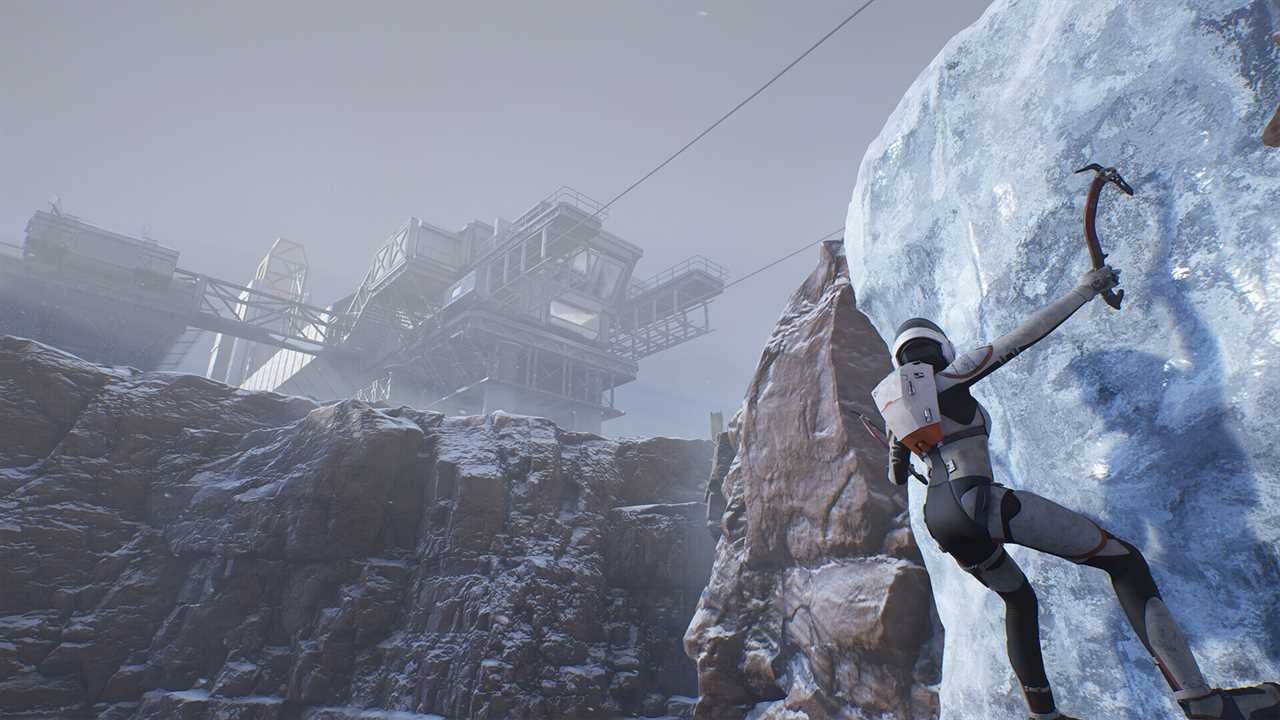DELIVER Us Mars is the long-awaited sequel to cult classic Deliver Us The Moon, a game I had not heard about prior to this review.
Because of that, going into it I thought there might have been some background information that I was missing, but thankfully it seems fairly solid as a standalone title.

Explore the foreign worlds in Deliver Us Mars.
With an interesting story, unique gameplay, and a big focus on environmental puzzles, Deliver Us Mars sounds solid on paper.
Unfortunately, the execution leaves something to be desired, and the technical details are a bit messy on PlayStation 5.
Let’s start with the story, though, as that’s where Deliver Us Mars delivers the most, providing a touching baseline for the rest of the game to spring from.
In Deliver Us Mars, you play as Kathy, a spacebound explorer with somewhat of a rough past, having been separated from her father some years ago.
Reading up a little bit on Deliver Us The Moon, it seems as if Kathy’s father was somewhat of a hated figure, after sabotaging a project that could have massively helped the dying Earth.
After her father left the planet, Kathy was raised by her older sister, a strict but loving mother figure that tried her hardest to keep Kathy on the straight and narrow.
That was easier said than done though, as Kathy had a rebellious streak, just like her father, that often got her into trouble.
That rebellious streak led to Kathy eavesdropping on an important conversation, revealing that a distress signal had been received from Mars, where Kathy’s father was expected to be.
Naturally, she barged in, demanded to be put on the mission to respond to the signal, and didn’t give up until she was.
What follows is a fantastical journey to space, followed by a not-so-fantastical disaster that leaves Kathy alone and grieving.
The storytelling in Deliver Us Mars is its strongest aspect, providing a deep, touching look at what it’s like to be alone in a foreign place.
It’s made even more pressing by the fantastic voice acting on display, with every performer giving their all to sell the performance with the weight and gravity it deserves.
Quite often you’ll find yourself wandering alone, with Kathy noting things off in the distance, or talking to herself about the ordeals she’s faced.
It’s these moments of reflection and isolation, especially following the loss of a family member, that hit the hardest.
But sometimes silence tells the best story, and Deliver Us Mars knows exactly when to stay quiet and let the world and the gameplay speak for itself.
Unfortunately, on the gameplay side of things, there are a lot of frustrations on display due to a wide range of issues.
Kathy’s basic moveset is pretty simple, she can run, jump, and interact with the world, as well as climb rock faces with two climbing picks.
It’s the climbing that really lets the experience down, coming up far too often and for far too long, with its frustrating mechanics.
Unlike many other games with climbing mechanics, Deliver Us Mars has you moving each individual pick into place, setting it, and then releasing the other.
On paper this sounds fine, but in reality it means that climbing is frustratingly slow, rather finicky, and frankly not very fun at all.
I spent most of my time while climbing trying to exploit the game’s systems so I would have to climb less.
While that journey to find a way to do less climbing provided entertainment in its own way, I would rather climbing just wasn’t as annoying in the first place.
Other environmental puzzles fare better, though, as the game’s laser puzzles are a lot of fun, especially in the late game when new elements are added.
The basic gist of it is that you’ll need to point a laser at a specific place, but sometimes you’ll need to do things in a particular order or avoid obstacles.
Later sections of the game add to this experience, with filters and the like to be placed in front of the lasers to change what they do.
While these are fun, some variety in the kind of puzzle solving on offer would have been nice too, as it gets a bit dull after a while.
Another place where the game falls a bit short is in its presentation, where the chosen art style leaves a lot to be desired.
It’s a mixture of hyper-realistic facial animations combined with what is generally a pretty stylised art style overall, leading to a lot of uncanny valley feelings.
At best this disconnect was a little bit distracting, and at worst it was downright unpleasant to look at in cutscenes.
It’s hard to be invested in a deep, meaningful story when the faces of characters speaking to you are so mismatched from their bodies and the environment.
I also experienced a surprising amount of pop-in, where objects would load in very close to the player, despite playing the PS5 version of the game.
That was helped a lot by a patch during the time I was playing, but it still felt a little bit like it was falling short of what the PS5 was capable of.
Overall, Deliver Us Mars is a nice idea on paper that falls flat in a few key places, leading to an uneven experience ranging from bad to great.
At its core, it’s a decent enough game with an excellent story, but frustrating gameplay and repetitive puzzles hold it back.
Written by Oliver Brandt on behalf of GLHF.






